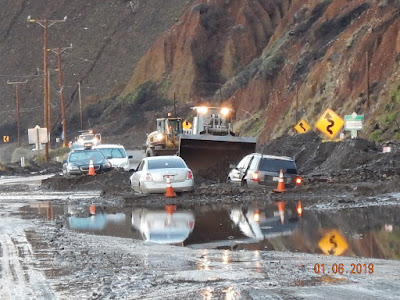This week I wanted to send my support to all affected by COVID-19 and encourage everyone to stay calm and informed and to practice social distancing as a real way to help the spread and overall consequences of this current virus.
This week we are discussing 'mass wasting' events in Geol9...
Landslides in the United States cause approximately $3.5 billion in damage, and kill between 25-50 people annually. The largest landslide in modern U.S. history (in terms of volume) was most likely one that occurred in 2013 in Bingham Canyon outside of Salt Lake City, Utah. It had a slide mass of 55 million cubic meters (compared to an estimated 10 million cubic meters during the Oso event in 2014, see image below).
Landslides impact California’s terrain often. These are generally related to precipitation patterns, in particular if there has been previous months of drought conditions. In January 2019, Pacific storms brought a lot of rainfall to the state. The heavy rain forced residents to evacuate from wildfire-ravaged areas. The “high risk” areas for mudslides are so because they are adjacent to steep slopes or are located at the base of drainage areas. Recent examples are the ‘Woolsey’ and the ‘Hill’ fire burn areas, which will be subject to high volume of mud and debris flow moving forward. The photo below shows a 2019 example.

